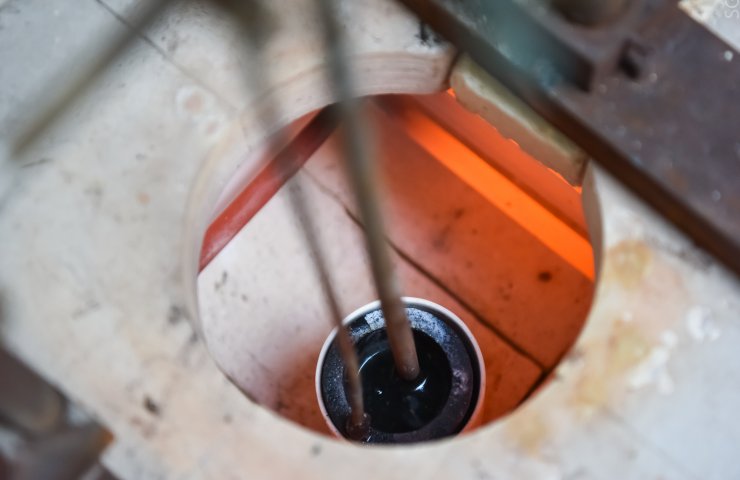A team of scientists from the Department of Non-Ferrous Metals and Gold of the National Research Technological University "MISiS" has found a way to reduce the cost of the process of obtaining technical magnesium, which is widely used in the aviation and defense industry. By improving the process, the scientists were able to increase the magnesium yield by 15% and reduce energy consumption by 5%. As a result, the productivity of magnesium plants can increase up to 10%.
Technical magnesium is a structural material widely used in alloys for the aviation, space and defense industries. Traditionally, pure magnesium is obtained by electrolysis from a compound - MgCl2 in a chloride environment, where it is decomposed electrolytically. Liquid magnesium is released at the cathode (negatively charged electrode) and chlorine gas at the anode (positively charged electrode).
However, there is a problem - in traditional electrolysis conditions, the current efficiency does not exceed 80%. This means that 100% of the current spent on the electrolysis process "pays off" only 80%, the remaining 20% is wasted. This is due to the fact that, "scattering" to the cathode and anode, magnesium and chlorine begin to combine again after some time. A team of NUST MISIS scientists have found a way to improve the electrolysis process so that the current efficiency increased to 95%, that is, no more than 5% of magnesium began to be "lost".
“Under traditional conditions of electrolysis of a magnesium-chlorine compound, liquid magnesium is released to the cathode, and chlorine gas to the anode. Due to the fact that the magnesium droplets are mixed with the gas, they easily rejoin. We found a way to prevent this process by lowering the temperature of the electrolyte, and forced the release of magnesium in solid form, ”says Andrey Lysenko, Ph.D., head of research, associate professor of the Department of Non-Ferrous Metals and Gold, NUST MISIS.
However, it remained to understand how to separate the solidified magnesium from the cathode, because simply scraping it off is difficult and ineffective. Then the scientists decided to try to bring magnesium into a liquid state - the very one with which they fought initially. But this time, time played a decisive role: it turned out that if the temperature of the electrolyte is raised quickly enough - within an hour - to make the magnesium melt, and then quickly get the molten magnesium out of the electrolyte, no more than 5% of the metal will be lost (versus 20% in traditional technology).
It should be noted that electrolysis is not the only way to separate the MgCl2 compound. For example, vacuum distillation is sometimes used, but this is a much more expensive method. It turns out that the development of NUST MISIS scientists is the most effective and cheapest way to obtain technical magnesium from all that exist today.
In the near future, scientists plan to tackle the issue of automating the entire cycle - from melting magnesium chloride in an electrolyte to scooping up the melt of finished magnesium.





